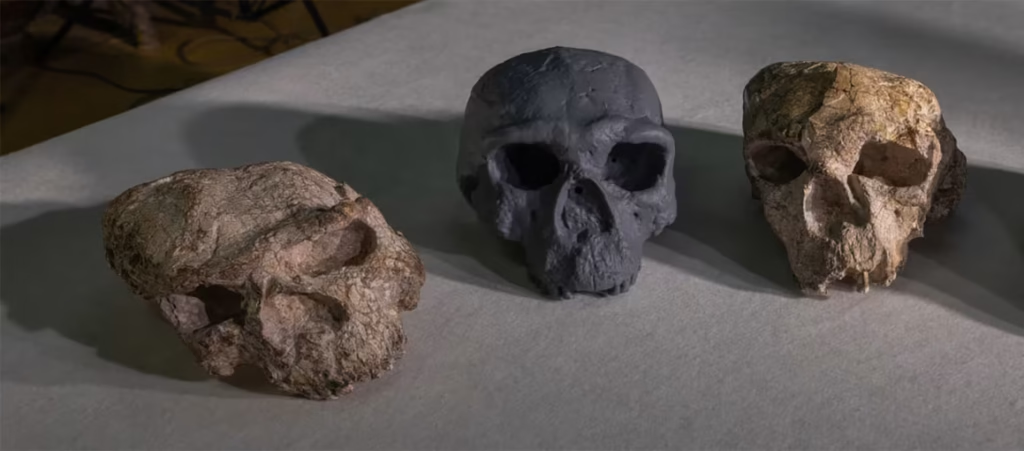A fossil skull unearthed decades ago in central China has been digitally reconstructed and may now force scientists to rethink the story of human origins. The skull, known as Yunxian 2, dates to nearly one million years ago and was originally classified as belonging to Homo erectus. Fresh analysis, however, suggests it may be closely linked to the Denisovans and the mysterious “Dragon Man” lineage, both thought to be relatives of modern humans.
The reconstruction reveals a mix of traits—massive brow ridges, a large braincase, and subtle features resembling early Homo sapiens. If the interpretation holds, it would place Yunxian 2 near the evolutionary branch point where modern humans split from the line that led to Neanderthals and Denisovans. That pushes the divergence back hundreds of thousands of years earlier than most current models suggest.
This finding has major implications. It challenges the traditional “Out of Africa” framework by highlighting Asia’s possible central role in the human story. It also fills part of what researchers call the “muddle in the middle,” a poorly understood period between 300,000 and 1 million years ago when multiple human species overlapped and evolved.
Yet big questions remain. The fossil is too old to yield DNA, meaning the conclusions rest on bone shape alone. Some experts warn that reconstructing crushed and incomplete fossils is fraught with uncertainty. Others argue the fossil could still belong to an unusually advanced branch of Homo erectus.
What is clear is that Yunxian 2 is adding new complexity to our understanding of deep human history. Each discovery reveals that evolution was not a straight line but a web of migrations, experiments, and branches—many of which left traces in our bones and genes today.


